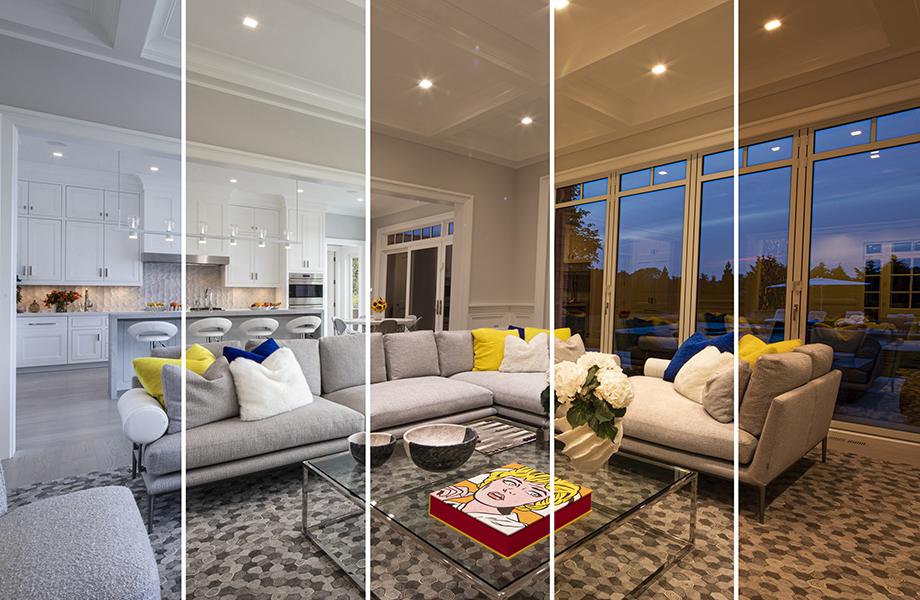LED technology has advanced rapidly in our lives. We have a new range of color-selectable LED fixtures. Understanding color selectable LEDs is essential to help you find the right color for your space.
These fixtures can be customized with LED light sources. Selectable means the LED can be set to different white light settings. Color selectable LEDs can change between preset white light temperatures, from warm to cold, with just one flip of a switch. Color selectable is not confused with tunable, which blends white color along a continuous scale. It is not RGB or RGBw. This uses red, green, and blue to create colors other than white.
Differentiating And Defining Color
Let’s start with the color rendering index, the color correlation color temperature (CRI), and the Kelvin scale. These primary colors will give you the best light possible for your room application.
Correlated Color Temperatures (CCT)
CCT is the visual appearance that white light has. White light can appear warm (more yellow) and cool (bluer). Warm light has a lower CCT (on the Kelvin scale), while cool light has a higher CCT. This color can influence the mood or appearance of spaces where artificial light sources are used. Warmer light is best for bedrooms and living rooms; for bathrooms, workspaces, and outdoor security lights, more excellent light is better.
Color Rendering Index (CRI)
CRI refers to the quality of light on a scale from 1 to 100. CRI measures color perception, or how the eye perceives healthy colors compared to natural light sources. A higher CRI value means colors will appear more true to life and are less likely to fade or look washed out. A CRI of 80 or more is a good standard. A CRI more significant than 90 allows for exact color rendering.
Advantages Of Selectable Color Fixtures
Color selectable LED fixtures offer design flexibility and allow for lighting control in multi-functional spaces.
Design Flexibility
Lighting designers and customers can customize lighting according to the room’s decor using selectable color fixtures. It’s simple to set up the lighting first and then choose the right color temperature for your room. You can change the room’s ambiance depending on what time it is or the mood you wish to create.
Kelvin Scale (K)
Kelvin selectable lights is the unit of color temperature. The Kelvin number is a measure of how warm the light will appear. The warm, or yellow, light is lower in Kelvin (typically 2000K-3000K) and creates an inviting, relaxed atmosphere in a space. A room will feel more lively if it has lights that are 3100K to 4500K. For environments that require more light, color temperatures between 4600K and 6500K provide bright white light.
Kelvin Color Temperature Scale
You can make a metal object glow by heating it. Depending on how high the Kelvin temperature is heating the object, the glow can appear in different colors such as blue, yellow, or red. These colors can be ranked using the Kelvin color temperature scale. They are either warm or cool or low and high. This scale helps us determine what kind of light a bulb produces.
- Less than 2000K. Dim light, similar to candlelight
- 2000K-3000K Warm, yellow-tinged light
- 3100K-4500K, bright white light
- 6500K & Up Bright blueish light
The temperature is the most critical factor in determining the color. A 5500K hospital bulb is much more relaxed than a bulb of the same temperature used in your living room.
The vast majority of residential lighting applications fall somewhere between 2000K-4500K. It is essential to know which light temperature bulbs are in your home’s fixtures. You’ll notice that the temperature of one bulb is different from its neighboring ones if it’s ever replaced.
Warm Colors
“Warm white” is light produced in the 2000K-3000K range.
Standard bedrooms and living rooms should use 2700K color-temperature bulbs to create a homey atmosphere. You can increase the color temperature to “soft-white” 3000Kor more for areas that require more visuals, such as the kitchen and laundry room. You can increase the temperature of these areas to get more clarity if warmth and relaxation do not matter.
Led Light Expert provides energy-efficient LED options in all climates. Led Light Expert’s bulb produces a soft light at color temperatures. Led Light Expert Lighting solutions offer the best savings and lowest maintenance.
Cool Light Colors
Blues and greens can be considered cool. They live at a higher Kelvin level. Cool light is better for task lighting, such as in the bathroom vanity or kitchen.
If you want to see a neutral white color, look for temperatures between 3100K-4500K. These color temperatures can range from “cool and white” to “bright and white,” with higher temperatures showing a slight tint of blue. These temperatures are brighter than the warm tones and give off a cleaner look.
In living spaces that use earthy and warm tones, select 3500K color temperature. If your home decor and paint schemes favor warmer colors, consider bulbs in the 4000K – 4500K range. Led Light Expert’s daylight color-temperature LEDs emit a clean lightly with a slightly blueish-white tone. This color is used for indoor security lighting.

